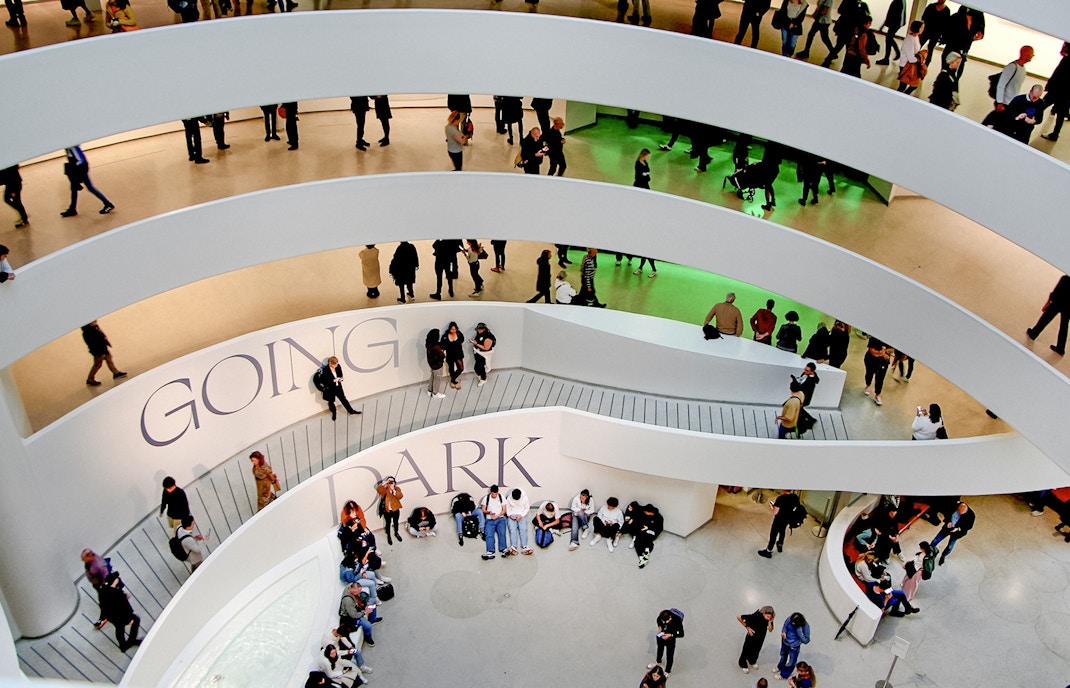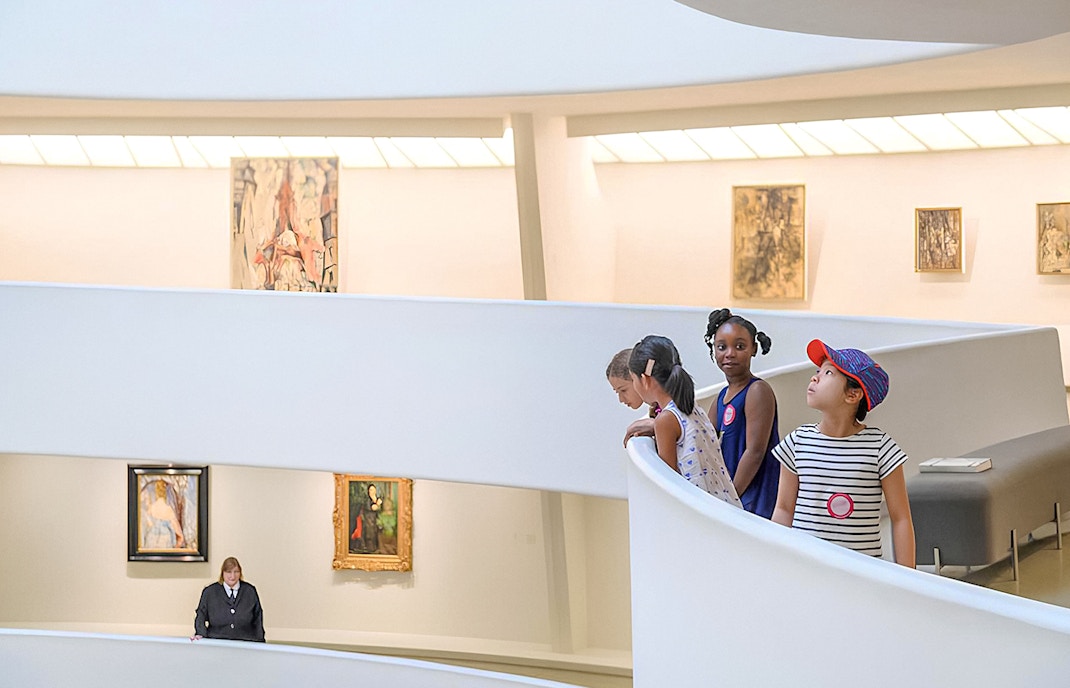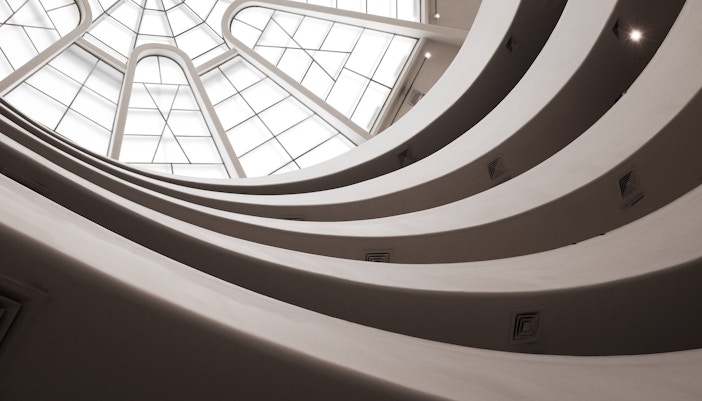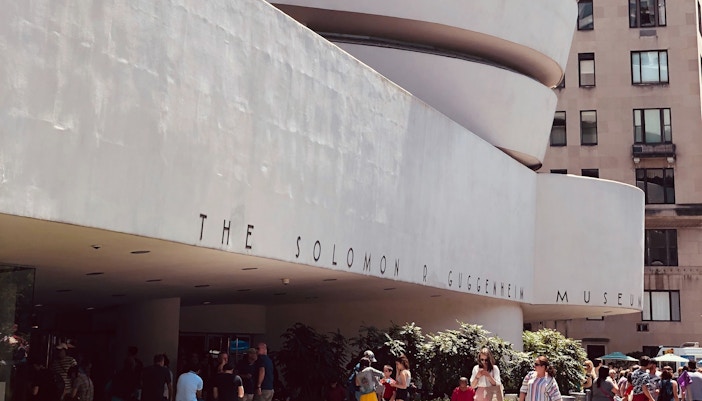The Guggenheim Museum’s six-story, bowl-shaped main gallery is a marvel of modern architecture. This south-facing gallery is designed to provide a continuous viewing experience as visitors ascend the ramp. The bowl shape creates a unique spatial experience, allowing for an unobstructed view of the artwork on display.
Guggenheim Museum architectural highlights explained

Bowl-shaped main gallery

Helical ramp
One of the museum’s most distinctive features is its six-story helical ramp that extends along its perimeter. This innovative design element allows visitors to view the artwork continuously without the need to retrace their steps. As they ascend, they are treated to a changing perspective of the artworks on display.

Central ceiling skylight
The museum’s central ceiling skylight is another architectural highlight. This feature allows natural light to filter into the museum, enhancing the viewing experience. The skylight not only illuminates the artwork but also creates a dynamic play of light and shadow within the space.

Organic architecture
The Guggenheim Museum stands out from its surrounding buildings due to its spiral form. This design, emphasized by the fusion of geometric shapes like triangles, ovals, arches, circles, and squares, corresponds to the concept of organic architecture used by Frank Lloyd Wright in his designs. This approach integrates the building with its environment, creating a harmonious and unified whole.



